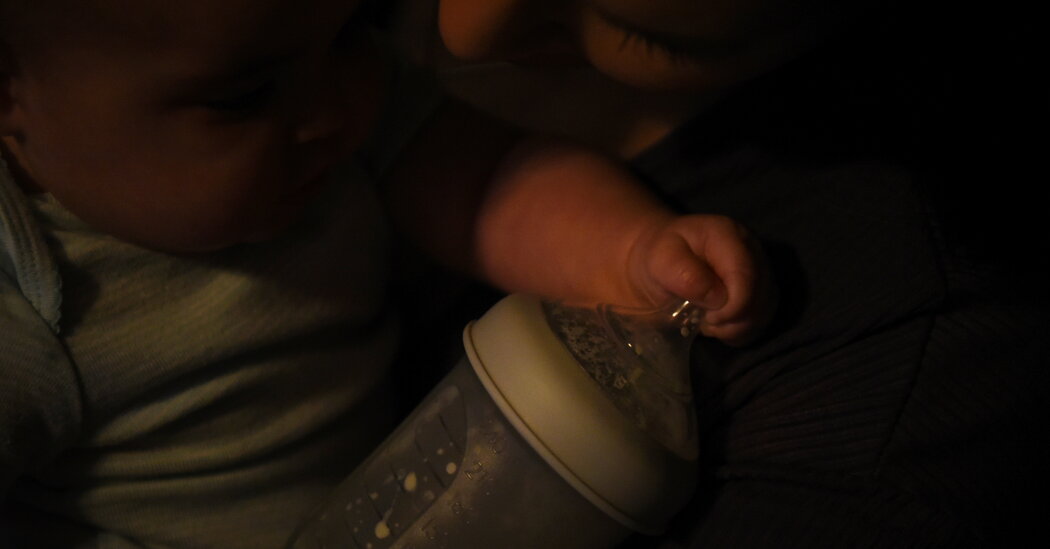During a recent five-year period, a substantial portion of maternal deaths in America — almost one-third — took place more than six weeks after childbirth, at a time when most new mothers think they are in the clear, researchers reported on Wednesday.
The study, published in JAMA Network Open, is one of the first to track maternal health complications during pregnancy and in the year after delivery.
Pregnancy-related death rates in the United States rose almost 28 percent from 2018 to 2022, the researchers found, surging at the height of the Covid-19 pandemic in 2021 before subsiding somewhat.
“Our study illustrates why we can’t take our eyes off maternal health,” said Dr. Rose L. Molina, an associate professor of obstetrics, gynecology and reproductive biology at Harvard Medical School and one of the study’s authors.
Women need “access to high-quality care from the moment of conception to a full year after birth,” she added. While there has been a growing emphasis on care in the year after childbirth, “we’re not there yet.”
The study was based on data from the Centers for Disease Control and Prevention’s division of reproductive health, which monitors maternal mortality and identified the risk of so-called later maternal deaths — those that occur from six weeks to one year after the birth.
The Trump administration shuttered the division last week amid mass layoffs and a restructuring of the agency, even though the United States has far higher maternal mortality rates than any other industrialized nation, with stark disparities among racial and ethnic groups. The division’s research aimed at understanding and narrowing those health gaps.
Cardiovascular disease was the leading cause of pregnancy-related deaths overall, as well as the leading cause of late maternal deaths. Other major causes were cancer, mental and behavioral disorders, and drug- and alcohol-induced deaths. (Accidents, homicides and certain other deaths were not included in the analysis.)
The risks facing women in the first year after a delivery were not well understood until recently. They take their toll after what traditionally is the new mother’s last recommended checkup, six weeks after childbirth — a period when attention is focused primarily on the health of the new baby.
The American College of Obstetricians and Gynecologists now recommends that all women see a doctor within the first three weeks after having a baby, with follow-up and ongoing care as needed, and a comprehensive postpartum visit no later than 12 weeks after birth.
“If you have any hypertensive disorders, I’m going to see you three to five days after delivery,” said Dr. Tamika Auguste, the chair of women’s and infants’ services at MedStar Washington Hospital Center and an author of the new guidelines.
“No longer are we saying, ‘Let’s wait six weeks’,” she added. “Anyone else, even without hypertension, I want to see within two weeks.” Patients should also be screened carefully for depression and mental health issues during that period, Dr. Auguste said.
Attention to late maternal deaths helped push most states to extend Medicaid coverage from 60 days to a full year after a delivery. Medicaid insures nearly half of all pregnant women, but proposed federal cuts may jeopardize the coverage, women’s health advocates say.
The study also documented stark racial, ethnic and regional disparities.
Native American and Alaska Native women died during pregnancy and the year after childbirth at rates 3.8 times as high as those among white women, while Black women died at rates 2.8 times as high. Hispanic women and Asian women died at the lowest rates.
Death rates also varied more than threefold between states. Southeastern states generally had higher pregnancy-related mortality rates: Alabama had the highest, followed by Mississippi. Nationwide, California had the lowest rate, followed by Minnesota.
Pregnancy-related deaths spiked during the Covid-19 pandemic to 44.1 deaths per 100,000 live births in 2021, up from 25.3 deaths in 2018, before declining to 32.6 deaths in 2022 — still higher than in the earliest years of the pandemic.
Late maternal deaths also rose during this period, subsiding somewhat in 2022 after a sharp rise in 2021.
Overall, the surge in deaths was observed in all age groups, but a disproportionate increase was seen among women ages 25 to 39. Cardiovascular disease played a leading role.
Pregnancy can affect the cardiovascular system and aggravate underlying conditions like hypertension. At the same time, cardiovascular disease is becoming more prevalent in younger adults, Dr. Molina said.
“We seem as a society to be getting sicker earlier, which is why we’re seeing this in that particular age group,” Dr. Molina said.










